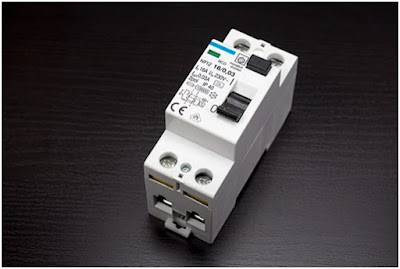What are low voltage circuit breakers?
The answer to this question is unwittingly simple. Low voltage are circuit breakers whose voltage threshold are 1000V. All circuit breakers that operate at voltages below 1000V are known as low voltage circuit breakers. The opposite is true for high voltage circuit breakers. Low voltage circuit breakers come in different types and are manufactured by numerous manufacturers.
Types of low voltage circuit breakers
Low voltage can be classified based on numerous characteristics. There is no standardized way to classify circuit breakers. To give you an insight into their various characteristics, we will classify them based on three of them:
- Sensing circuit
- Construction
- Medium used to extinguish the arc
Sensing circuit
There are two ways low voltage circuit breakers sense voltage, thermal and magnetic sensing. In thermal sensing, the circuit breaker uses a heating element to sense the heat produced by circuit current. The heater is often locatednear the bimetallic strip which is connected to mechanically to movable contacts that enable to create an open in the event of overcurrent.
In magnetic sensing, the circuit breaker uses a coil in series to sense overcurrent. As current flows through the circuit, a magnetic field is developed around the coil. This magnetic field then attracts a metallic arm of a solenoid. The metal arm only opens mechanically when the magnetic field becomes intense enough.
Construction
Low voltage circuit breakers are constructed in different ways. Listed below are some of the common constructions
- Miniature circuit breaker (MCB)
- Din-rail Miniature Circuit Breaker
- Plug in Miniature Circuit Breaker (Plug-In MCB)
- Molded Case Circuit Breaker(MCCB)
- Residual current device (RCD)
- Motor protection circuit breakers (MPCB)
- Motor Circuit Protector
- Hydraulic-magnetic circuit breakers (HMCB)
The MCB and MCCB are very common. MCBs normally works below 100 amperes. They have fixed values which are usually determined during production. MCCBs, on the other hand, have higher current ratings compared to MCBs and like them, they have fixed values that are determined during manufacture.
Medium used to extinguish the arc
This classification mostly applies to MCBs. There are single, double and triple pole MCB, they have one, two and three poles respectively.
The functions of low voltage circuit breakers
Low voltage circuit breakers conduct the flow of current as long as the rated current is flowing through it. When the breaker senses a large amount of current beyond the rated, the tripping unit actuates the bimetallic strip in the case of thermal sensing or the metallic solenoid in the case of magnetic sensing resulting breaking off contact. Unlike fuses, low voltage circuit breakers retain current flow after rated current resumes flow. They do not become permanently damaged as a result of overcurrent, instead, they trip.
Applications of Low voltage circuit breakers
Low voltage circuit breakers are an essential part of that the protection systems of every electrical system. In the event of an overload, they will automatically disconnect the circuit from the current source hence protecting the system from damage. Low voltage circuit breakers are used in;
- Household appliances
- Industrial networks
- Utility networks
- Generators
- Military equipment and machinery
- Mining equipment
- Aviation equipment
Of course, the use low voltage circuit breaker is not limited to the above-listed applications. It can be used in a lot more equipment. Every other electrical system that consumes or passes less 1000 V and requires protection certainly has a low voltage circuit breaker.
Source: https://blog.enrgtech.co.uk/low-voltage-circuit-breakers/














0 Comments